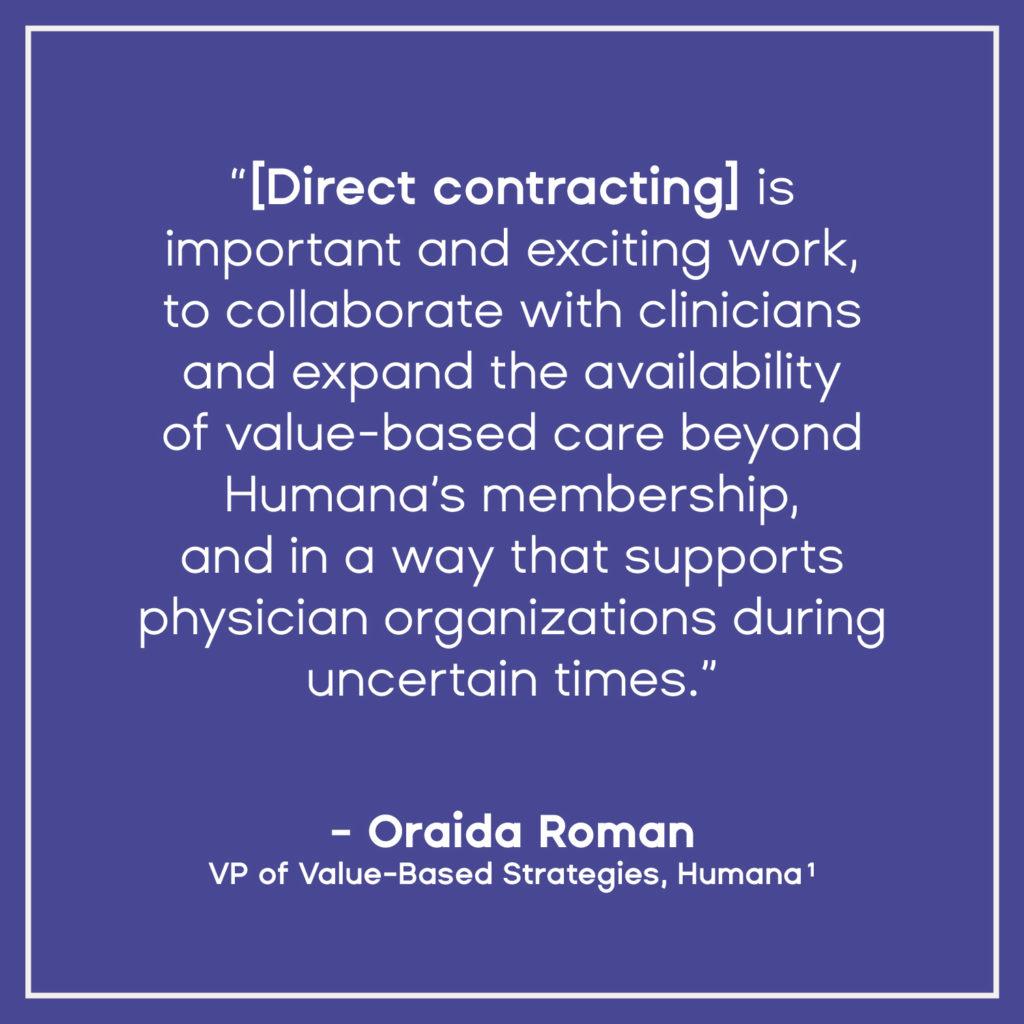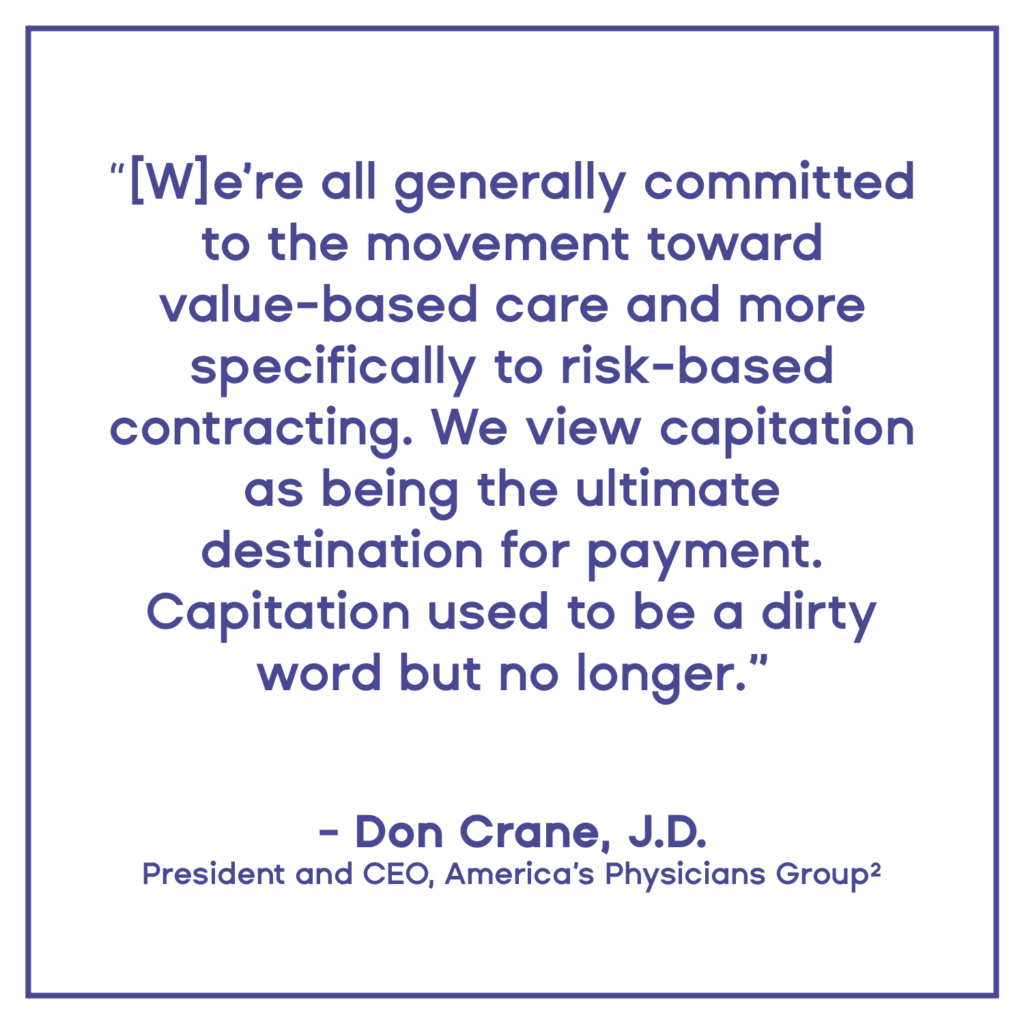Despite being the most advanced nation in the world, the U.S. struggles with healthcare. As is often noted, the U.S. spends roughly double per capita on healthcare compared to other developed nations–but its overall quality of services and healthcare outcomes are not commensurate with this spend. Attempts to address this spend-quality mismatch have led to a number of new healthcare reimbursement models. The latest of these models, borne by the Centers for Medicare and Medicaid Innovation Center (CMMI), is Direct Contracting healthcare.
Direct Contracting healthcare is a structured payment mechanism between Medicare and healthcare providers to incentivize providing quality healthcare at affordable economics–both to patients and taxpayers. In contrast to past value-based care models, which reimburse providers for specific services rendered, direct contracting adopts a capitated payment system: providers receive monthly payments indexed to the historical cost of care of providing primary care services to their patient panel, as well as bonus payments based on the quality of care provided and the savings realized. Direct Contracting healthcare thereby incentivizes innovations in the primary care clinical model that better align with patient- and system-level goals. We at Pearl believe this capitation-oriented payment model, in conjunction with outcomes-oriented incentives, will revolutionize the US care model.

Overview of the Direct Contracting Model
CMMI has been exploring value-based healthcare models as an avenue for controlling Medicare spend for some time. Over the past decade, CMMI introduced its Shared Savings Program and launched Accountable Care Organizations (ACOs). These healthcare changes were designed to place greater emphasis on outcomes. To an extent, they did result in some cost reductions and improvements in quality of care. But these changes have been inadequate, leading CMMI to pursue the Direct Contracting healthcare model, which allows physicians to fully capitate their revenues for the first time, and places a far greater emphasis on physician risk-sharing.
The Global and Professional Direct Contracting Models are structured around partnerships between CMS, Direct Contracting Entities (DCEs) and healthcare providers. DCEs are essentially the ACOs of Direct Contracting–organizations of providers striving to improve outcomes and efficiency, paired with the infrastructure necessary to achieve that success. Primary care providers can align themselves to a given DCE, and thereby align the patients that they care for to that DCE as well. In DCEs that have elected the Professional track, PCPs receive a base capitated payment for providing primary care services. If the care provided yields quality outcomes at lower-than-expected costs, the DCE receives half of the savings generated (sharing some with their member providers), while CMS receives the other half. But if costs exceed expectations, the DCE is responsible for repaying Medicare for half of these extra expenses. Providers choosing to work with a DCE in the Global track enter a capitated payment arrangement with CMS for either primary care or total care services. Instead of receiving half of the savings or paying half of the extra costs, they’re exposed to the economics (both the upside and downside) of the entire cost of care for the Medicare beneficiaries in their patient panels.

Unexpected Demand for Direct Contracting
The Direct Contracting healthcare model launched on April 1st, 2021, with a total of 53 Direct Contracting Entities participating. Others that filed applications had the option to defer enrollment in the program until 2022. However, CMMI is not currently accepting additional applications for future performance years.
Many are disappointed with this announcement, as they see Direct Contracting healthcare as an opportunity to progress physicians’ exposure to healthcare risk (and the alignment towards outcomes this exposure engenders), as well as a vehicle that affords physicians the freedom to engage with patients in the modalities and frequencies appropriate to managing their health (due to the capitation structure of the payment model). It remains to be seen if CMMI will open future application windows.
The Way of the Future in Healthcare
For providers not currently enrolled in a participating DCE, options exist for them to work with one of the 53 existing participants. Currently, CMMI has granted licenses to entities in 39 states, as well as the District of Columbia and Puerto Rico. These Direct Contracting healthcare entities will likely employ a variety of new strategies from which providers and their beneficiaries can benefit. The innovations included in the Direct Contracting healthcare model are likely indicative of the future of value-based care in the US–and the lessons learned will inform our best opportunities for revamping a healthcare system in need of change.
1 As in other government programs, Direct Contracting features upside/downside ‘risk corridors’ that haircut outsized savings and losses. For the sake of clarity, we do not address this program feature here.
2 Donlan, A. (2021). Humana Set Up to Be Largest Home-Based Care Provider Approved for Direct Contracting. Home Health Care News. Retrieved from https://homehealthcarenews.com/2021/05/humana-set-up-to-be-largest-home-based-care-provider-approved-for-direct-contracting/
3 Burns, J. (2021). Whither the ACO? ManagedHealthcareExecutive.com. Retrieved from https://www.managedhealthcareexecutive.com/view/whither-the-aco-


